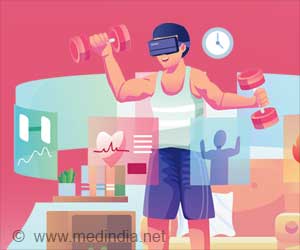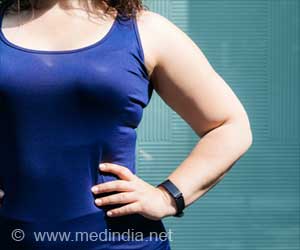AI and thermal video integration offers new insights for weightlifting, optimizing performance and preventing injuries with real-time monitoring and analysis.

- AI-powered thermal imaging tracks muscle activity in real time to enhance weightlifting performance
- The method improves injury prevention by analyzing temperature changes and body positioning
- Flexible, cost-effective technology can be applied to sports training and rehabilitation
Infrared imaging technique for weightlifting exercise assessment
Go to source).
AI-based thermal video technology can now track muscle exertion and body movement, helping athletes avoid injuries! #aiinsports #medindia’
Advancements in Sports and Health Monitoring
Thermal Imaging in Sports:Infrared or thermal imaging can prove valuable in analyzing muscle activation and isolating areas of stress or tiredness. It can also be used to avoid injuries, control the thermal reactions in the organism, and even measure exercise. Traditional methods entail only taking pictures before and after the procedure, thus not giving full knowledge of the body.
Continuous Thermal Video Analysis:
Researchers have devised a way to work through entire thermal video records. In this way, temperature can be constantly monitored, and changes in position and body angle throughout the entire exercise can be recorded to get an overall picture of muscle stress.
Combining AI with Thermal Imaging
Concerning face and body detection, the research team employed Google’s MediaPipe AI software that used thermal images to detect people and their components. They were able to find out the algorithms to obtain the temperature and position, where the color pixel data was converted into temperature and the angles of joints calculated from the key points.The researchers applied their method with different cameras: a low-cost thermal camera with a smartphone, a high-quality standalone thermal camera, and a common RGB camera. The information from these recordings was fed into a computer, and the computer produced reports on the positions of the body parts and the change in temperatures.
Camera Performance and Detection Challenges
Based on the first trials, it was noticed that both types of thermal cameras allowed separating the body of the athlete from the background, while the regular cameras stated some difficulties. The thermal camera being used affected the accuracy of detection and therefore should be suitably accurate for the needed precision.Some postures, like when the athlete is curled up or when the weight is placed in a way that hides the body, the technology struggles to identify. Still, the method showed its effectiveness and proved it as a rather efficient one, providing the use of color labels and thermal images as well as obtaining detailed positional information.
Applications and Future Directions
Enhancing Athletic Performance: The new method also means that athletes and coaches could see slight changes in the temperature and the positioning, and this would enable them to alter some practices for the better and in safer ways. This technology can be implemented easily with low-cost thermal cameras as well as high-end devices.Healthcare and Rehabilitation: Apart from sports, this could have vast applicability in the medical field, especially in the field of physiotherapy. By using this thermal data and position information, specialists are able to create a more effective way to plan the patient’s recovery after an illness or injury.
Broadening the Scope: The researchers also plan to adjust the algorithms used in their approaches more carefully and widen the studies to other athletes both with and without impairments of conventional and Paralympic sports. Such feedback helps guide the position movements, including arm raises, in the right manner, hence improving all the training results.
The combined innovation of AI and thermal video enhances weightlifting and other exercises and movements in general. This approach optimizes performance, and minimizes injuries; it is as useful to sports coaching and training as to health maintenance and medicine.
Reference:
- Infrared imaging technique for weightlifting exercise assessment - (https://opg.optica.org/ao/abstract.cfm?uri=ao-63-28-7529)
Source-Medindia









